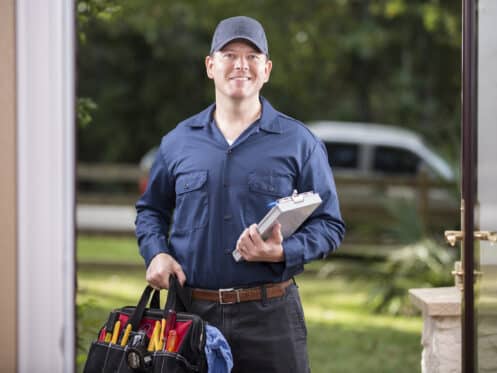HVAC ratings are energy efficiency ratings. These ratings provide a nutshell understanding of an HVAC system’s carbon footprint and long-term costs. Consumers can use these ratings to compare one model to another. The Environmental Protection Agency (EPA) also uses them to set standards for the industry.
Energy Star
Energy Star is an EPA program through which it tests and certifies appliances. Certified appliances have the Energy Star logo on the label that provides energy efficiency details. Certification gives consumers added peace of mind beyond just the HVAC ratings themselves. When you purchase an Energy Star product, you do so with the confidence that it will perform up to manufacturer promises.
Tax Credits and Local Energy Rebates
There are a number of ways through which consumers can mitigate their initial investment in a new HVAC system. Perhaps the most notable is the Energy Efficient Home Improvement Credit, which is currently available through 2032. The most important criterion for the EEHIC is that the system be Energy Star certified. Depending on where you live, there may also be energy rebates offered through local government and utilities. Those will usually require Energy Star certification as well.
SEER
Seasonal energy efficiency ratio (SEER) is a measure of cooling performance. The industry uses it to gauge the efficiency of both air conditioners and heat pumps. It measures how many watts the system needs to transfer a unit of heat energy from inside the home to outside. The formula then extrapolates it over an entire cooling season. This is a reason that the EPA sets different SEER stands depending on the region: North, Southeast and Southwest. In the Southeast, the minimum SEER rating is 15.0.
HSPF
Heating seasonal performance factor (HSPF) is similar to SEER but used to gauge heating performance. The industry uses HSPF exclusively for heat pumps. This is because heat pumps don’t generate heat as furnaces and boilers do. Instead, they transfer heat energy much like an air conditioner but in the other direction. HSPF measures how many watts the system needs to transfer a unit of heat energy from outside to inside the home. The formula then extrapolates it over the entire heating season. The minimum HSPF rating in the Southeast is 8.8.
SEER2 and HSPF2
Due to energy efficiency innovations in the HVAC space, the EPA introduced new standards that went into effect in 2023. This included two new versions of the HVAC ratings discussed above: SEER2 and HSPF2. The main difference is that the testing procedures and formulas now account for static air pressure. That refers to the pressure in the ducts of a central system. SEER and HSPF will eventually become deprecated. In the meantime, you’ll often see both listed on an appliance. The minimums for the Southeast are 14.3 SEER2 and 7.5 HSPF.
AFUE
Annual fuel utilization efficiency (AFUE) measures the efficiency of appliances that generate heat, such as furnaces and boilers. It informs you how much fuel the system loses in the conversion. The AFUE rating for electric furnaces is between 95% and 100%. That means that the system loses little to no electricity in the conversion. As of 2023, the minimum AFUE for all three regions is 81%. High-efficiency gas systems have an AFUE of 90% or higher. These are generally condensing units that are able to reclaim heat energy that the system would otherwise lose through the exhaust.
EER
Energy efficiency ratio (EER) is similar to SEER without the regional and seasonal contexts. EER is useful for measuring the peak cooling efficiency of an air conditioner or heat pump. In most cases, SEER and SEER2 will be more practical to the average consumer.
COP
Coefficient of performance (COP) is a similar concept to EER but for heat pumps. COP lets you compare the peak heating performance, at a set temperature, of one heat pump to another. The formula does not take into account factors like region and seasonal performance.
Your Local HVAC Pros
Putnam Mechanical is a premier HVAC provider with offices in Sarasota, Florida, Mooresville, North Carolina and Greenville, South Carolina. Our HVAC technicians install, maintain and repair all types of heating and cooling technologies. Those include furnaces, boilers, heat pumps, air conditioners, ductless systems and zoned configurations. We have electricians who perform inspections and upgrade electrical panels too. Our electricians also install lighting, outlets and ceiling fans. Call us today to learn more about these services or to schedule an appointment or consultation.
